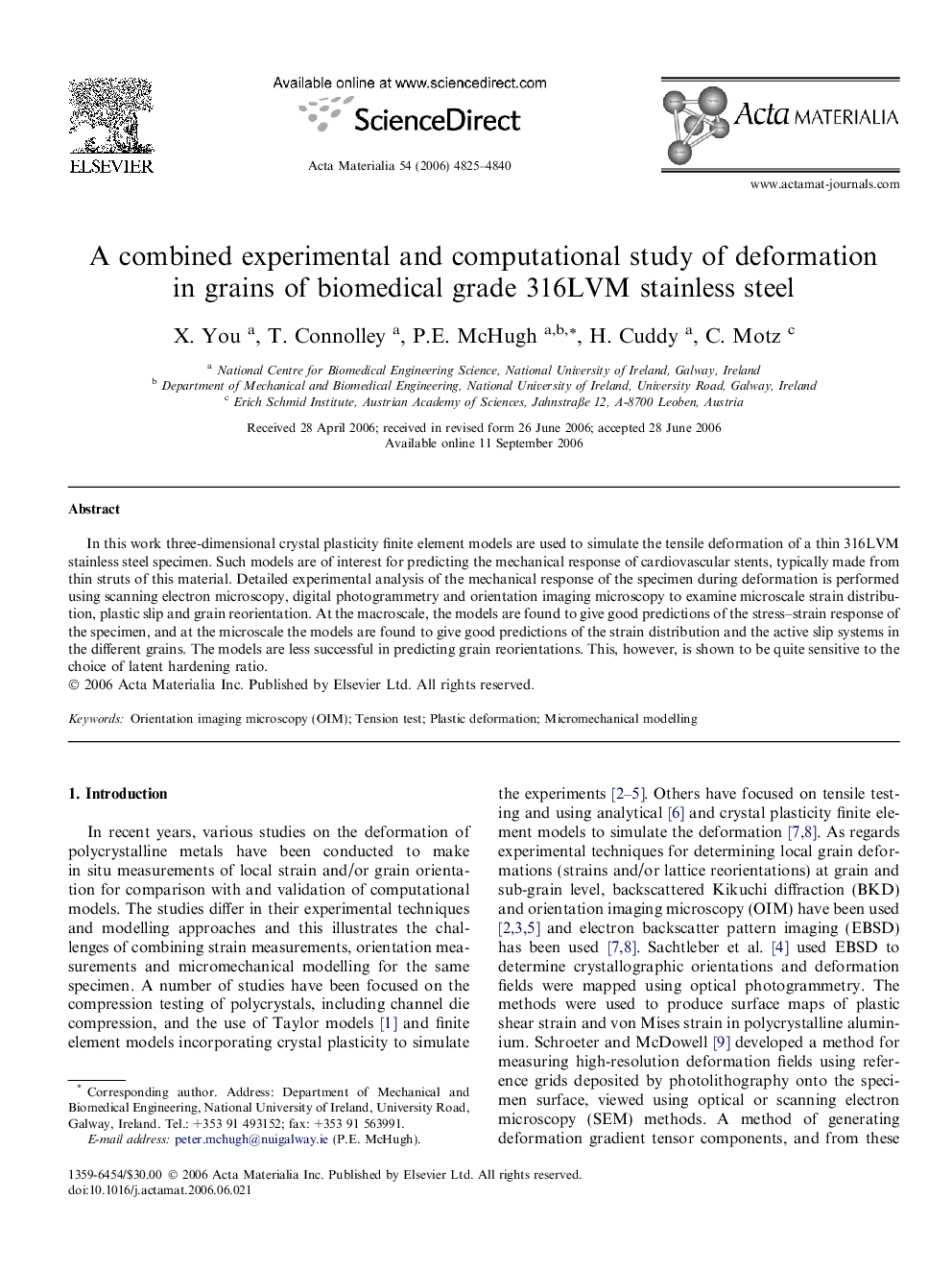| Article ID | Journal | Published Year | Pages | File Type |
|---|---|---|---|---|
| 1450143 | Acta Materialia | 2006 | 16 Pages |
In this work three-dimensional crystal plasticity finite element models are used to simulate the tensile deformation of a thin 316LVM stainless steel specimen. Such models are of interest for predicting the mechanical response of cardiovascular stents, typically made from thin struts of this material. Detailed experimental analysis of the mechanical response of the specimen during deformation is performed using scanning electron microscopy, digital photogrammetry and orientation imaging microscopy to examine microscale strain distribution, plastic slip and grain reorientation. At the macroscale, the models are found to give good predictions of the stress–strain response of the specimen, and at the microscale the models are found to give good predictions of the strain distribution and the active slip systems in the different grains. The models are less successful in predicting grain reorientations. This, however, is shown to be quite sensitive to the choice of latent hardening ratio.
